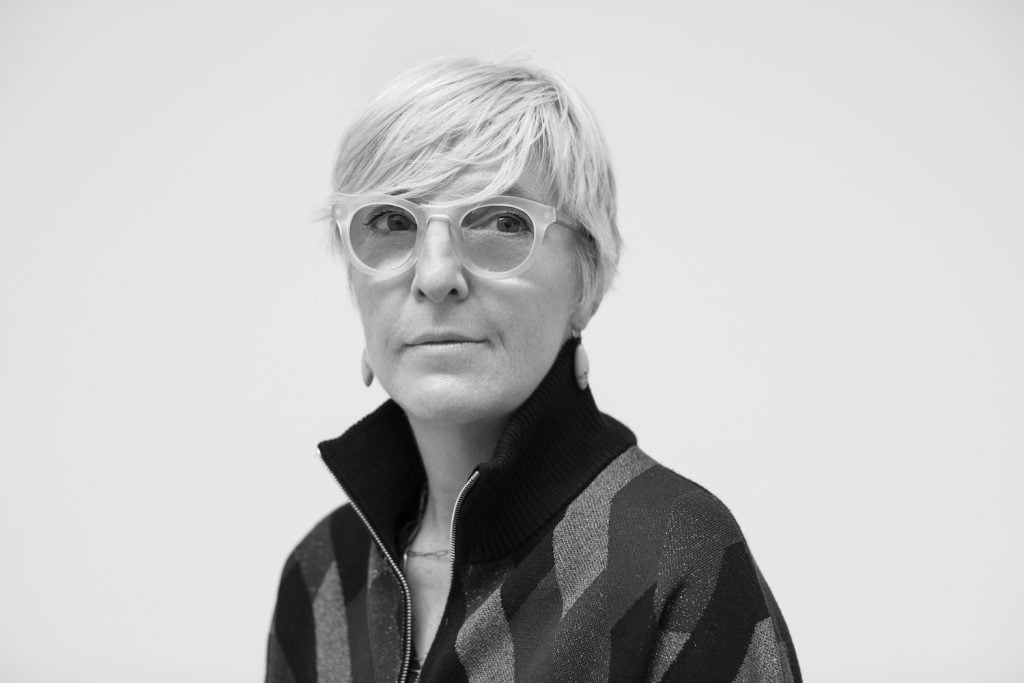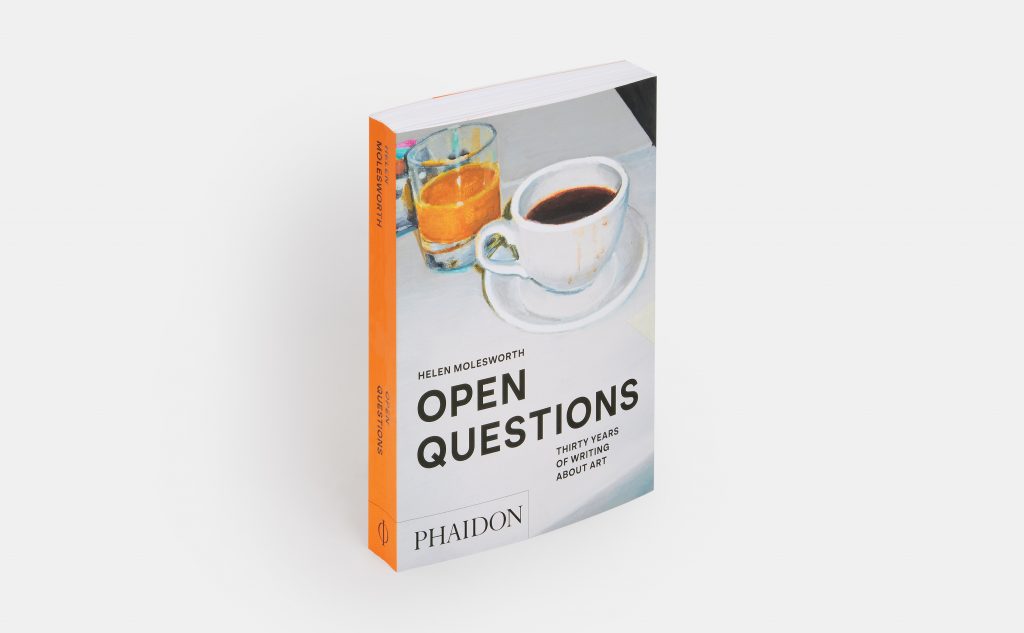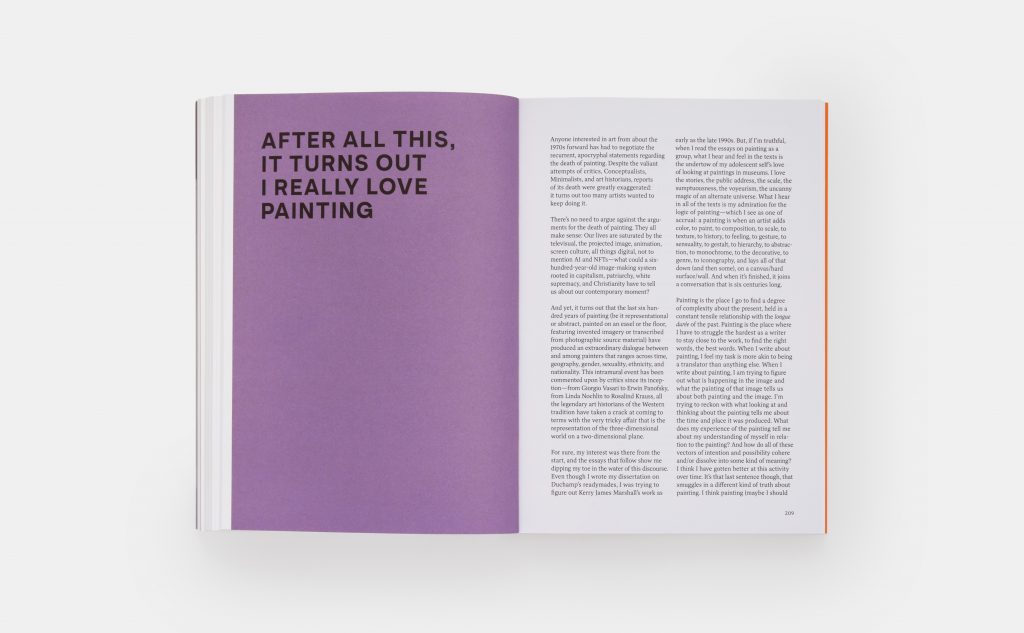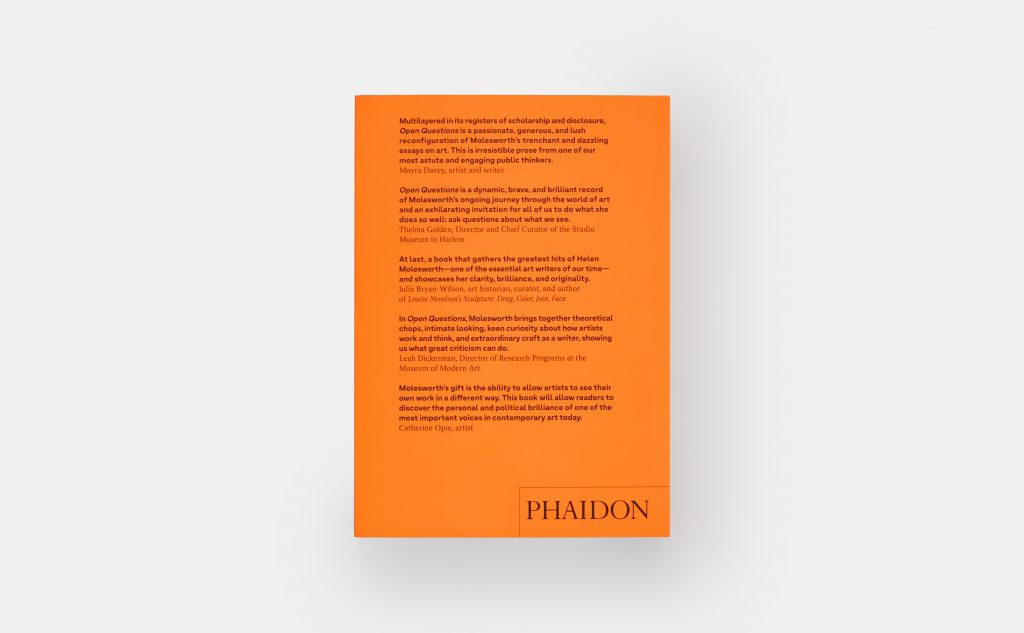People
‘I’m Not Rewriting History, but Annotating It’: Curator Helen Molesworth on Her New Career-Spanning Book of Essays
The curator discusses the themes—from taste to feminism—that have fueled her writing over 30 years.

The curator discusses the themes—from taste to feminism—that have fueled her writing over 30 years.

Taylor Dafoe

In 2018, Helen Molesworth was unceremoniously dismissed from her position as chief curator of the Museum of Contemporary Art, Los Angeles. The move proved controversial among industry insiders, many of whom cast it as an example of an institution punishing its employee—a straight-talking, strong-willed feminist—for refusing to march in line.
But for Molesworth—whose resume also includes stints at the Institute of Contemporary Art Boston, the Baltimore Museum of Art, and the Wexner Center for the Arts—the backlash didn’t change the facts: for the first time in years, she was a curator without a home.
Since then, Molesworth has struck out on her own—and she’s been as active as ever. She’s guest-curated critically acclaimed exhibitions at David Zwirner, Jack Shainman, and the International Center of Photography. She’s also hosted a hit podcast, “Death of an Artist,” about Ana Mendieta; led a series of filmed artist interviews; and been profiled by the New York Times.
The forward momentum has given the curator little cause to look back—that is, until now.
This month, Phaidon will release “Open Questions,” a career-spanning collection of Molesworth’s essays, all previously published in exhibition catalogues and art journals. Most of the written pieces are about artists—people like Kerry James Marshall, Catherine Opie, and Lisa Yuskavage—but the real subject of the book, of course, is Molesworth herself.
Ahead of the book’s release, we sat down with Molesworth to talk about the project and the period of deep personal reflection it inspired.
Editor’s note: this interview has been edited for clarity and condensed. To hear the full conversation, listen to the Art Angle podcast.

Helen Molesworth’s new book, Open Questions. Thirty Years of Writing about Art, published by Phaidon.
Earlier this year, the New York Times published a great profile of you pegged to “Face to Face,” an exhibition of artists’ portraits you curated at the International Center of Photography. In the article, you called writing your “secret sauce.” You said, “I love writing for the ear. I always imagined myself as the narrator. Even my curating was basically a form of writing in my mind. Each art object is a sentence, a room is a paragraph, six rooms is an essay.” What did you mean by “writing for the ear?” And how have you translated that approach to curating, podcasting, and other mediums?
Another way of saying it is that I try to write how people talk. One of the things writing can do is become a kind of professionalized language. We could see this perhaps most clearly in the law. We have the very things that govern our relationship to each other transpire in a language that almost none of us speak and very few of us understand, and it makes most of us incredibly anxious. It struck me that that works in the law’s advantage—to keep some people outside and other people inside.
Early on in my life in the art world, I felt that art writing did something similar, that we wrote in a language that was so far removed from how folks talk to one another. I had been thinking about talking art with my friends who weren’t involved in art. I had a great friend named Jason Fusco. He was studying in grad school to become a veterinarian, and I was studying to become an art historian, and he and I would go to bars and get ridiculously wasted. He always wanted to know a story about an artist. He would say, “Tell me a story.” And I would say, “Okay, so there’s this guy named Marcel Duchamp, and he was friends with this woman named Florine Stettheimer…”
That was the beginning of writing for the ear, in a way.

Open Questions: Thirty Years of Writing about Art, 2023. Courtesy of Phaidon.
Let’s talk about the book itself. There are 24 essays in it, all previously published in exhibition catalogs or journals and magazines like Artforum, Frieze, and October. The collection spans three decades of your professional life. What was it like traveling back through time as you revisited them and how did you settle on these essays for inclusion?
Well, I’m very fortunate that I’ve been able to be friends with so many artists and organize a double handful of retrospectives. I knew something about how bad it was going to feel to go back and read everything and look at everything. I also knew how important it would be to go back and read everything and look at everything. Because I think when we give artists retrospectives in museums, one of the things we’re doing is giving that artist an opportunity to see a lifetime’s worth of work that’s been dispersed. To have that moment is a profound privilege, and I’m overwhelmed by the privilege of being able to have this collective volume of essays.
But one thing that is really interesting to me is that I’ve really only had a handful of ideas. It seems like I’ve had more ideas than that, or that I have this heterogeneous practice, but in fact, I’ve kind of been chipping away at the same problems for three decades. And that made me feel oddly good in a way, [realizing], oh, there is something there. There’s a throughline to my own work. I haven’t been buffeted by the winds of fashion or I didn’t look with my ears as they say. Sometimes I had a set of concerns that I was interested in as a person, as an art historian, as a curator, as someone interested in progressive ideas or someone interested in institutions, and I chipped away at them and I didn’t quite know all the throughlines were there, that so much of my interest could be seen early and that it was cumulative.
How I chose the essays? There’s part of me that almost doesn’t remember. There have been several different tables of contents, as you might imagine. I know that I wanted to foreground some of the work on Duchamp that I felt had gotten scattered. I was also aware that when you write a monographic essay, an essay on one artist, [they] sort of disappear too. You only read them if you’re reading about that artist. So I wanted to reanimate those monographic texts and see how they stood the test of time, so to speak.
Finally, I was interested in charting if there was a change in my writing. Had I evolved as a writer and a thinker? So I tried also to choose a range of essays that moved from my earliest writing to the most recent.

Open Questions: Thirty Years of Writing about Art, 2023. Courtesy of Phaidon.
How do you feel you’ve evolved over that time period? Were there any favorite essays that you left on the cutting room floor?
Oh yeah, I think about the essays on the cutting room floor all the time. It’s really interesting to me because when I worked as a curator, I never thought about the paintings I cut. I was ruthless. The cutting room floor is a cutting room floor. You tell the story very much [like you would as] a movie editor. I’m Thelma Schoonmaker. But in my own ruminations about this book, I have been plagued by the essays left on the cutting room floor.
To your other question about how my own writing has changed, I think, in the beginning, I was much more academic. I was still working on how to write in an academic context, or I was trying to pull that academic rigor into a museum context. By the time we get to the more recent essays, I’m not in a museum context and I’m not in an academic context and I have to find a voice for myself that isn’t straining against those two institutions or behaving within the conventions of those two forms of institutional writing. I hear some of that writing as quite different, as trying to have a very different voice than the early material.
You mentioned that you’ve there have been a select few ideas at the center of your writing for decades. What are they?
It seems to me that from the very beginning, I’ve been concerned with problems of labor and work. What is work? What is enough work? What is good work? [That question led] to the next problem, which is taste. How do we make the judgments that we make when we are standing in front of works of art? Those questions of taste had one valence in the academy, where taste is a bad word because you’re ostensibly operating underneath the rubric of reason, which would negate taste. But once I entered museum life, it was really clear to me: taste is everything. I was confronting my own taste constantly because I had to, on the one hand, lobby for the artworks I was trying to bring into that discussion or suspend it as I negotiated it for the museum to do the public work of a museum. That meant talking about work, acquiring work, displaying work that I didn’t “like.”
So taste has been a constant question. And if you’re talking about labor and taste, it’s very hard not to start talking about women, especially if you have a vexed relationship to [this question of], “Have I done enough work today?” or, “Why does this cost this and that cost that?” Because that’s about value. Questions of value are central to questions of feminism. Questions of labor are central to feminism. I think also questions of taste are central to feminism because we have a canon formed, historically, by extremely privileged white men of European descent and so their taste became naturalized.
That’s the third idea. And then I think the fourth is the daily, the quotidian, the everyday—the facticity of where I’m sitting, where you’re sitting. I’m someone who thinks about those things. I can see a patterned wallpaper behind you. I think about who put that wallpaper there. When did that happen? What does it mean? Why do we think it doesn’t mean anything?

Open Questions: Thirty Years of Writing about Art, 2023. Courtesy of Phaidon.
One of the sections in the book is called, “Full-Time Employment, or When I Really Became a Feminist.” Its three essays talk about the lessons you learned upon joining the workplace, including the idea that parity isn’t the goal you once thought it was. The section includes a preface that addresses some of the language and ideas you would change if you were to rewrite these essays today. Why did you feel it was important to contextualize these pieces of writing in particular?
In each of the sections, I tried to look back at the work with a certain kind of distance. And by that, I mean, I didn’t go in and edit the essays. The essays are [presented] pretty much as they are. That was very important to me, that they have a time stamp, that I’m not rewriting history, but annotating it. The “When I Really Became a Feminist” section has, I think, the most searching revision. Its three essays were written between 2000 and 2010, and they really are a record of me trying to grapple with what it was like to be a middle-class white woman in a professional setting and advocating for things that that professional setting wasn’t particularly interested in. But even though I was doing that work, the term “woman” was, for me, still woefully under-thought. It was cis-gendered. It was white. It was middle class. And honestly, sometimes I’m not even sure if it was queer. It had a generic quality that I think defaults to whiteness.
I think the essays suffer from those blind spots, and so rereading them was curious in that regard. To see one’s own blind spots in the past is cringy. And then I decided, well, what is it other than cringy? Because cringy felt a bit self-satisfied, like your ego still gets to be absolutely at the center of the story, even as you’re trying to displace it. So I wondered, what did those essays prepare me for? In that regard, they did do a certain kind of work because they helped me get at what we do with these institutions that are actually predicated upon our absence. It’s not that they forgot to invite us in. They didn’t invite us in on purpose.
It’s a huge category of people that aren’t being let in. We’re what’s called a “structural absence.” And because I was trying to think about structural absence as an effect of power relations, it allowed me to move forward in some other areas of my work. I don’t think I could have done that if I hadn’t written those essays with a really flat definition of “woman” at the center of them.
I want to talk about the last five years of your career—a chapter that began with your departure from the Museum of Contemporary Art, Los Angeles in March of 2018. Up to that point, your professional life had largely been tied to universities and museums. Since then, you’ve been independent—and, it seems to me, highly productive. What did you lose when you left MoCA and the institutional world writ large? And what did you gain?
Well, for people who get fired very publicly, like I did, one of the things we’re subject to is a kind of social death. You don’t get invited to stuff anymore. And people are anxious to talk to you because they’re afraid it’s contagious. And they don’t know what to say. And they feel bad. A kind of silence overcomes [you]. A kind of isolation overcomes [you]. It’s very painful. That kind of social death is real and it has to be acknowledged, I think.
I think you hear strains of that in the postscript [I wrote for a 2020 essay] on Lisa Yuskavage. That was really when I had a come-to-Jesus moment with myself. I was like, okay, you’re out here on your own. This phone is not going to ring now. What do you want to do? Who do you want to talk to? What do you want to write? What do you want to look at? What do you want to think about now that you are not beholden to others in that way? What are you going to do, as Mary Oliver says, with your one precious life? I perversely decided to go for broke on a Lisa Yuskavage essay. For me, it was really the breakthrough in a way. It was my own way out of the very painful space of shame that I was in.